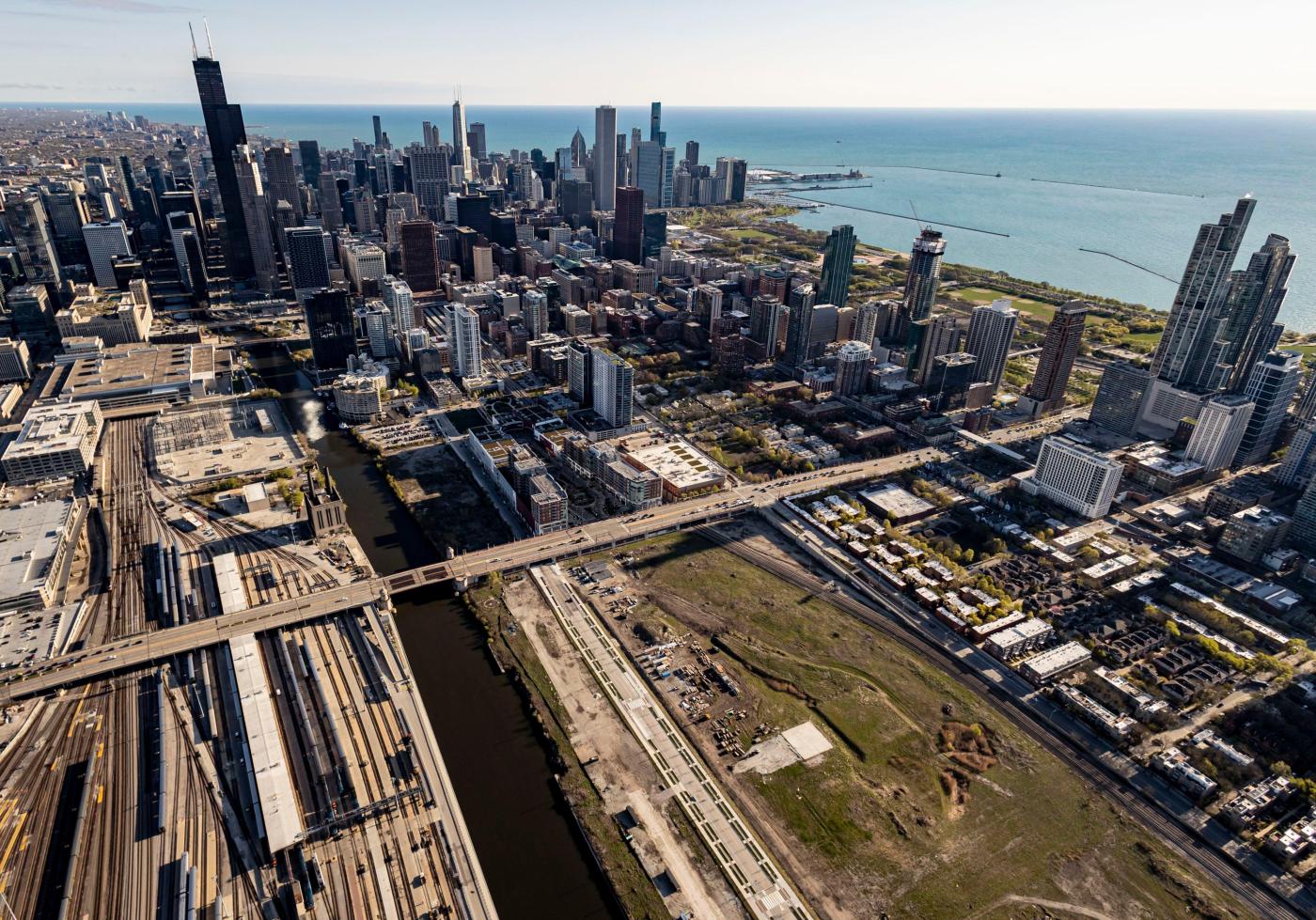
Editorial: The 78 is a fabulous site for White Sox baseball and much else
When Chicago was selecting sites for a new casino in 2022, we endorsed the bid that would have landed the giant entertainment center on the plot of land known as The 78, the name being a concise riff on Chicago having 77 official neighborhoods.
Why? For starters, The 78, which is bordered by Roosevelt Road to the north, Clark Street to the east, 16th Street to the south, and the South Branch of the Chicago River to the west, is an enviable, shovel-ready site for development.
Its selection for the casino would not have, ahem, displaced anybody and at considerable expense. It offered river frontage, leading us to envision lovely waterfront bars and restaurants that would not attract the free-and-clear objections and lawsuits that applies to lakefront projects and that could, in essence, extend the trajectory of Chicago’s successful River Walk to the North. There is room to breathe within this 62 acres of former railroad land, now owned by developer Related Midwest, and The 78 is supremely well served by existing modes of public transportation. That would be especially the case once the long-planned new CTA station is built at 15th Street.
All of those arguments would apply just as well to a development that included a new stadium for the Chicago White Sox.
But that wasn’t the most important reason why we were, and are, so enthusiastic about The 78.
Right now, it’s a barren barrier, a dead zone undermining the potentially symbiotic relationship between Chicago’s Loop and the South Side.
If The 78 were developed, and done right, it could relink the South Loop with Chinatown and Bronzeville and could radiate economic development out from the business district to the south, filling the kind of hole that the West Loop entertainment district has plugged to the west and that the Gold Coast residential neighborhood long has provided to the North. Get rid of that no man’s land and just maybe the huge success of Millennium Park, another railroad-related project, from two decades ago could be emulated in a section of the city with a greater need.
The 78 is a huge, fallow asset and, given how well suited it is to entertainment, a casino or (better yet) a new sports stadium is what it needs. For a sense of what this could look like, all you have to do is look at Tiger Stadium in Detroit, with its lively eateries and relationship to a reignited downtown, or to the huge pedestrian area around Allegiant Stadium in Las Vegas or, of course, at Wrigleyville.
Guaranteed Rate Field is, frankly, unloved and unlovely. It’s too harsh, isolated, steep, hemmed in and fan-unfriendly. The neighborhood often has been resistant when it comes to developing the surrounding parking lots into fan amenities. Despite its relative youth, it’s a relic of a time when the stadium still was just the stadium. Now, as we well know, sports teams don’t so much hope to spark development as to control (and ideally own) what goes on down the street, where fans stay, eat and play.
Unlike the NFL, which plays few games a year, Major League Baseball plays all summer long with scores of home games each season. Office workers could walk to the new stadium from the Loop, potentially a carrot when it comes to getting workers back downtown.
We understand, as tourism officials well know, that the Cubs and the Sox are very different propositions when it comes to economic development. The Cubs attract huge numbers of out-of-town fans who stay in hotels and cite Cubs games as the anchoring reason for their weekend visit. The Sox fan base is primarily local, spinning off far less secondary spending. But that does not have to remain the case. The site where the games are played is a big factor.
We’ve long been on record believing the days of handing over taxpayer funds to hugely profitable sports franchise owners should be over. We’ve said many times that the Chicago Bears, still playing the long game of chicken or persuasion or whatever, should pay for their own stadium, being a private business planning to operate in a private facility.
We feel that same way about the White Sox, although that view doesn’t preclude city and state governments from working with the team (or with the Bears, for that matter, if they’re serious about staying in Chicago) to make any move as hospitable and supportive as possible. It’s not unreasonable to chip in on infrastructure and the public areas, especially if the site also is going to include housing, parks and the like. Even Ald. Nicole Lee, 11th, whose ward long has been home to the White Sox, has said she is impressed with the plan.
No doubt tax increment financing will be needed, which some would call a form of public financing. Philosophically, in terms of insisting on private investment, the devil is in the details there — TIF money can go to public improvements that arguably a private developer might otherwise shell out for. We note the current mayor’s queasiness on TIFs, given the city’s cash-strapped situation. He ought to make an exception here if the public and private interests are properly aligned. And we don’t see a big problem with basically transferring the existing 2% hotel tax to this project, since that already is dedicated to a similar use.
The fate of Guaranteed Rate Field has to be part of this discussion, of course, and it’s unlikely that site would satisfy the Bears, for most of the same reasons that the White Sox don’t want to stay, even if there were a new stadium. But an empty concrete shell by the side of the Dan Ryan Expressway would not be acceptable. Part of the package should include redevelopment plans: housing, sports facilities for the community, a stadium for the Chicago Fire if they are interested, playing fields and other benefits appropriate for a facility built with public money and owned by the Illinois Sports Facilities Authority.
All of those debates are to come. But of all the sports shenanigans we’ve written about these last few years, the idea of the White Sox at The 78 is far better than most. We cannot overemphasize the strategic importance of that connective tissue from an economic development point of view.
The 78 could make the Sox, South Loop, Bronzeville and Chinatown big winners, and that’s without having to stuff a slot machine or throw a pair of dice.
Join the discussion on Twitter @chitribopinions and on Facebook.
Submit a letter, of no more than 400 words, to the editor here or email letters@chicagotribune.com.
()


